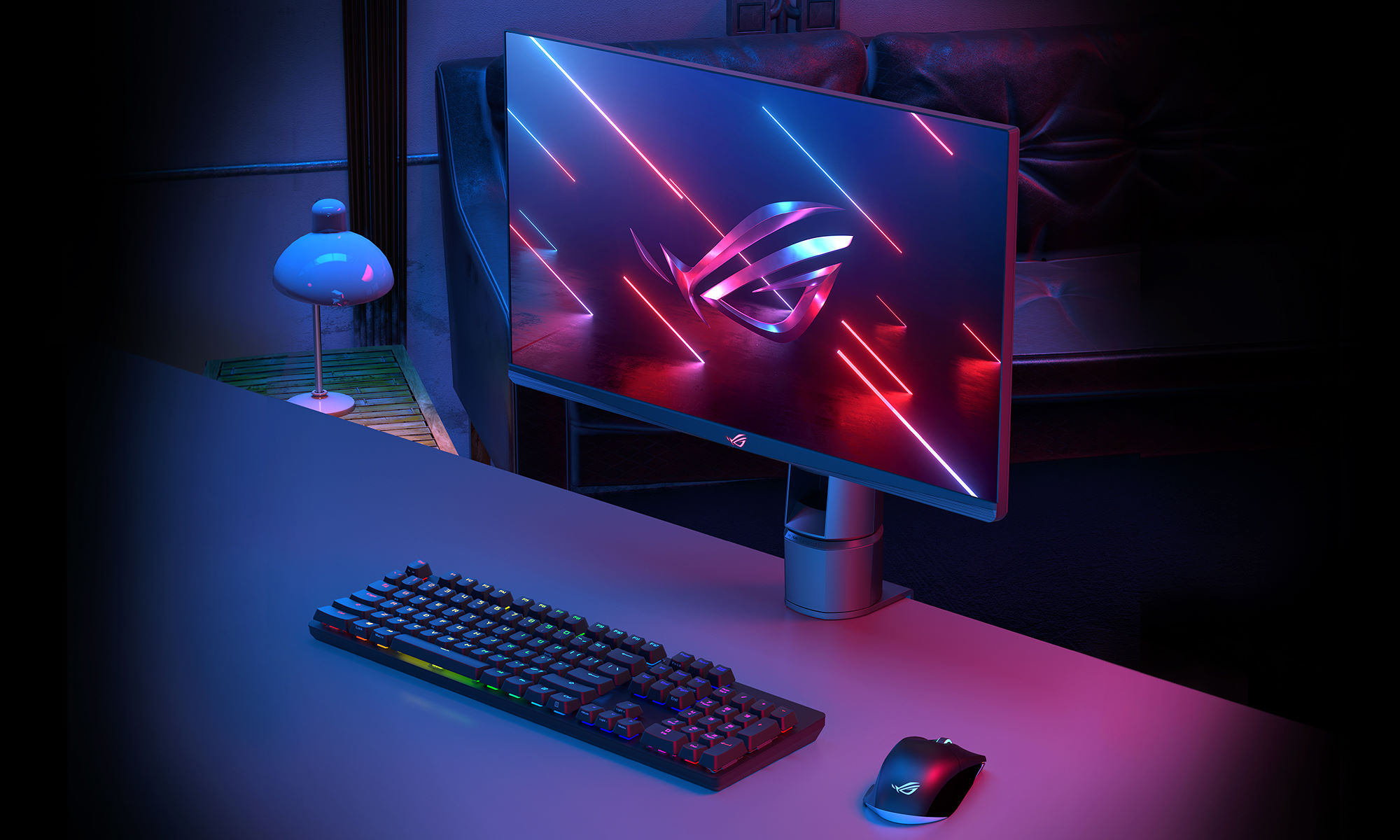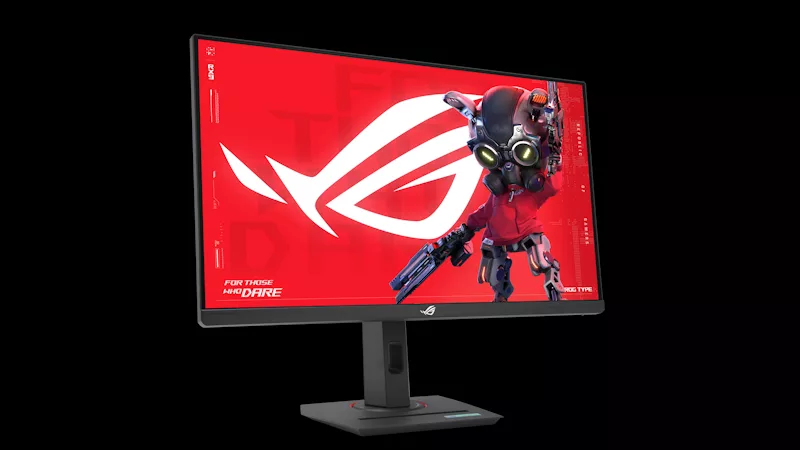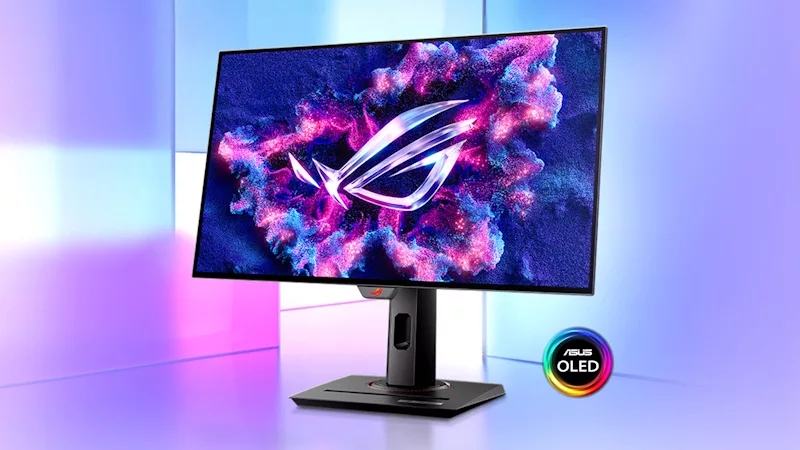The ROG Swift 360Hz PG259QNR gaming monitor helps elite gamers measure and minimize system latency
Call it lag. More precisely, call it latency. Either way, it’s one of the most dreaded terms in gaming. At the wrong moment, the delay from a latency spike can be the difference between landing a perfect headshot and taking a shot to your face. PC gamers usually think about latency in terms of network ping, but knowing that figure is just the beginning of combating annoying delays. There are many other local sources of delay in a PC gaming setup—known as system latency—that can slow the translation of input into on-screen action. To help gamers measure and minimize system latency, the ROG Swift 360Hz PG259QNR display includes a new performance-measurement weapon for elite players.
Say cheese
The ROG Swift 360Hz PG259QNR incorporates a new tool called the NVIDIA Reflex Latency Analyzer. We built that tool into this particular monitor because of how critical responsiveness is to PC performance in competitive gaming. Responsiveness is a measure of how quickly your display updates after mouse clicks or movements, and the NVIDIA Reflex Latency Analyzer helps you understand just how long it takes for your PC to process an input and turn it into display output. This time, measured in milliseconds, is known as end-to-end system latency.

To take advantage of this tool, compatible mice like the upcoming ROG Chakram Core plug into a USB port on the monitor itself. Next, the NVIDIA G-SYNC processor inside the display watches for the arrival of the click signal from the primary mouse button, records a timestamp for this signal, and passes the click through to your PC. The Reflex Latency Analyzer then monitors a preset region of the display panel’s pixel data for new information, like a virtual gun’s muzzle flash, to appear.
When this new information is ultimately displayed, the Reflex Latency Analyzer shows the time in milliseconds that it took for the PC and display to process the mouse click and deliver the resulting action on screen. This measurement is called PC-plus-display latency. The ROG Swift 360Hz PG259QNR can show this information on any system through a native on-screen display. PCs equipped with an NVIDIA GeForce graphics card can show not only the PC-plus-display latency measurement, but also finer-grained information like mouse-click latency and render latency, through an NVIDIA GeForce Experience in-game overlay.
If you don’t have a GeForce graphics card or a verified mouse, or even if you prefer to play games on a console, the NVIDIA Reflex Latency Analyzer in the ROG Swift 360Hz PG259QNR can still help you quantify end-to-end latency, albeit with less granularity than in an ideal setup. Because the measurement of each mouse click and the resulting display change all occur on the G-SYNC processor, the PG259QNR can provide an on-screen measurement of PC-plus-display latency for any platform capable of supporting mouse input over USB—even for cloud gaming services.
System latency measurement made simple
If the NVIDIA Reflex Latency Analyzer indicates that your system needs many dozens or hundreds of milliseconds to process mouse input, it may mean that it’s time to troubleshoot your system’s performance or upgrade to a new competition-grade gaming mouse from the ROG arsenal. But without the capabilities of this tool and the ROG Swift 360Hz PG259QNR, you might not have realized that end-to-end system latency was ever holding you back to begin with.

Before the Reflex Latency Analyzer, elite gamers and esports teams who wanted to measure end-to-end display latency needed to invest in expensive and specialized equipment. They first had to wire up a mouse with a hacked-in LED to visibly indicate when a button click occurred. They then had to use a high-speed camera, potentially costing thousands of dollars, to record the click and capture the resulting change on screen. Finally, they had to play back the footage and examine how many frames were between the click and the accompanying display change to figure out just how much time elapsed between input and output.
Analyzing system latency in this way requires a significant time investment and is aything but accessible. The ROG Swift 360Hz PG259QNR, on the other hand, makes this invaluable information immediately accessible and practically foolproof to obtain. Esports gamers walking up to unfamiliar PCs equipped with ROG Swift 360Hz PG259QNR displays at tournaments can even enable the RLA before a match to see whether a given system is delivering the low end-to-end system latency they need to perform at their best.
Unique insights and winning specs
Beyond its NVIDIA Reflex Latency Analyzer, the ROG Swift 360Hz PG259QNR retains all the top-end specifications of its sibling, the ROG Swift 360Hz PG259QN. Its 360Hz refresh rate, lightning-quick 1ms response time, ASUS Fast IPS panel, and vivid color reproduction make it one of the most versatile gaming monitors around. To find out more about the PG259QN, check out our companion article.
The ROG Swift 360Hz PG259QNR is our first display to ship with the ROG Desk Mount Kit. This convenient mounting bracket can clamp to the edge of most any flat work surface. The PG259QNR’s stock adjustable mounting arm drops right into the desk mount, making more room for a keyboard and mouse for gamers who prefer to sit close to the screen. You can also take advantage of the stylish new stand that comes with both the PG259QN and PG259QNR. The choice is yours.
To learn more about pricing and availability of the ROG Swift PG259QNR in your region, please contact your local ASUS representative.


